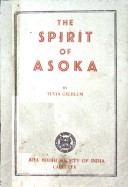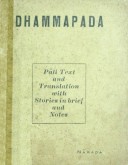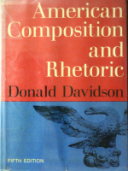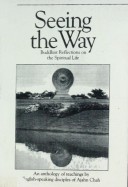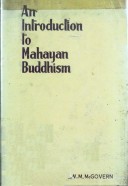Tìm Sách
Sách tiếng Anh-English >> The Life of Buddha As Legend & History
Thông tin tra cứu
- Tên sách : The Life of Buddha As Legend & History
- Tác giả : Edward J. Thomas
- Dịch giả :
- Ngôn ngữ : Anh
- Số trang : 297
- Nhà xuất bản : Dover Publications Inc. Newyork
- Năm xuất bản : 1949
- Phân loại : Sách tiếng Anh-English
- MCB : 1210000002715
- OPAC :
- Tóm tắt :
PREFACE
Since the appearance of the epoch-making works of Rhys Davids, Kern, and Oldenberg, the sources for the history of Buddha and Buddhism have been greatly increased. The accessions to our knowledge of the Pãli texts are indeed chiefly due to Rhys Davids, but these new data have never been incorporated with previous results, nor has an estimate been made of the extent to which they modify earlier conclusions.
The present work attempts to set forth what is known from the records, and to utilise information that has never yet been presented in a Western form. Even now much of the material is accessible only in works published in Burma, Siam, and Ceylon, but the great work begun by Rhys Davids in establishing the Pali Text Society is still vivified by his spirit, and continues in the fruitful labours of his successors. Not the least of his achievements is the Pali Text Society’s Dictionary, now completed by Dr. W. Stede. All the Pali passages quoted in the course of this work have been either translated or retranslated by me in the light of the evidence accumulated by these scholars.
There has been a tendency in Germany and England to depend almost entirely on the Pali sources, neglecting the works of schools preserved in Sanskrit, and in Tibetan and Chinese translations from the Sanskrit, which although often later than the pãli, yet are parallel and more or less independent traditions, and cannot safely be ignored. The Pali itself is no primitive record, but the growth of a long tradition in one school. The Sanskrit needs to be equally closely analysed; and if the result tends to show the historical weakness of a narrative based on one set of records, the final conclusions are all the more reliable.
All the traditions are subordinate to the fact of the establishing of a system of doctrine and a religious order. The earliest form of the doctrine is still a matter of controversy, but it is possible to separate off much that is agreed to be the development of later centuries. One important fact brought out by the comparison of Sanskrit sources is the fundamental doctrinal agreement in the earlier schools, a result which makes it impossible to treat the pãli tradition as a truncated or perverted form of a nobler teaching. Mahãyãna doctrines are doubtless older than the works in which we find them expounded, but they do not belong to the oldest schools.
How far Buddhism now possesses validity as a religion is a further question, on which opinions diverge greatly. A recent writer has said that “all that has hitherto been held to be the ancient Buddha doctrine is false, inasmuch as its root idea, with the passage of time, has no longer been understood, nay has actually been perverted into its very opposite”. For this writer Buddhism is “not one religion among many others, but as the most perfect reflection of the highest actuality, the Absolute Religion It may be that this writer is not so exclusively in possession of the truth as his words seem to imply, but while such views are held, it is surely of the first importance to know what our documents actually say, and what the earliest interpreters thought they meant.
What lies before us, as well as behind us, has been well put by Mrs. Rhys-Davids: “When believers in the Blast and historians in the West will come out of the traditional attitude—when we shall not hear church-editing called Buddha-vacanam, and thought of as Gotama-vacanam— when we shall no more read: “The Buddha laid down this and denied that but “the Buddhist church did so” —then we shall at last be fit to try to pull down superstructure and seek for the man…”
PREFACE
My greatest thanks are due to Miss C. M. Ridding of Girton College, who has read and criticised much of the work in manuscript, and to Miss o. G. Farmer, Mary Bateson Fellow of Newnham College, for reading and criticising the proofs. To Professor Sir William Ridgeway, Sc.D., F.B.A., who helped and encouraged me at all stages of the work, I am no longer able to express my thanks and gratitude. I am also greatly indebted for valuable discussions and information on special points to Professor s. N. Dasgupta, Ph.D., Dr. G. s. Ghurye, Reader in Sociology in Bombay University, and Professor K. Rama Pisharoti, M.A., Principal of the Sanskrit college, Tripunittura.
Edward J. Thomas.
PREFACE TO THE THIRD EDITION
THE accessions to our knowledge of Buddhism during the last twenty years have consisted chiefly in establishing the fact of the existence of a Sanskrit Canon parallel to the Pãli. When the Pali Scriptures were first brought to light there was a tendency to ignore all the Sanskrit sources. This was at the time inevitable, for the few Sanskrit works then known were very late and mingled with Mahayana doctrines. But now more and more portions of the Sanskrit form of the Scriptures are being discovered. Much of their contents was known from Chinese and Tibetan translations, and the evidence to be drawn from them has already been used in the present work. Although there were many schools or sects, there was only one Canon, with differences of detail and arrangement such as might be expected in the case of records for long preserved by memory. They were in a Prakrit dialect, and were finally committed to writing in Pãli by the Theravãda school and by the Sarvãstivãdins in Sanskrit. Another school, of which less is known, was that of the Mahisanghikas. Some examples of these parallel recensions are given in the author’s Early Buddhist Scriptures.
Although these schools developed special doctrines, nothing of these divergences is found in the Canon itself. The variants that occur usually refer to historical or legendary events in the narrative portions attached to most of the discourses. The latest and most detailed piece of research on these variant records has been done by Dr. E. Waldschmidt, who has treated the Mahãparinibbãna-sutta in great detail. He has collected all the Sanskrit passages that have been recovered and has compared them with the other known documents in Pãli, Tibetan, and Chinese. Japanese scholars, in particular M. Anesaki and c. Akanuma, working from the Chinese, have analysed the four collections of discourses (Agamas or Nikãyas) common to all known schools, so that it is now possible to form a connected view of the Sarvãstivãda Canon. The Vinaya of the Sarvãstivãdins, of which the late M. Finot has edited the fundamental list of rules known as the Prãtimoksha-sũtra, shows equally clearly how the schools held to their authoritative texts. Here, as in the case of the Suttas, the divergences lie in the legendary matter, in which there came to be wide differences between the various schools. The result of all this is not to weaken the authority of the Pali Canon, but to show how all schools inherited an authoritative series of texts. It reduces the likelihood of the notion that behind this tradition lay a forgotten or misunderstood form of primitive Buddhism.
Edward J. Thomas.
Oriental Faculty Library,
Downing Place, Cambridge.
May, 1948.
CONTENTS
Preface
Introduction—the sources
I. The ancestry of Buddha
Note on the geography of early Buddhism
II. The home and family of Buddha
III. The birth of Buddha
IV. Infancy and youth
V. The Great Renunciation
VI. Austerities and Enlightenment
VII. The first preaching
VIII. Spread of the Doctrine
IX. Legends of the twenty years’ wandering
X. Rival Schools. Devadatta and Ajãtasattu
XI. The last days
XII. The Order
XIII. Buddhism as a religion
XIV. Buddhism as a philosophy
XV. Buddha and myth
XVI. Buddha and history
XVII. Buddhism and Christianity
Appendix. The Buddhist Scriptures
The Theravãda (Pãli) Canon
Canonical works of other schools
Bibliography
Index
 Facebook
Facebook
 Google
Google
 Google+
Google+


